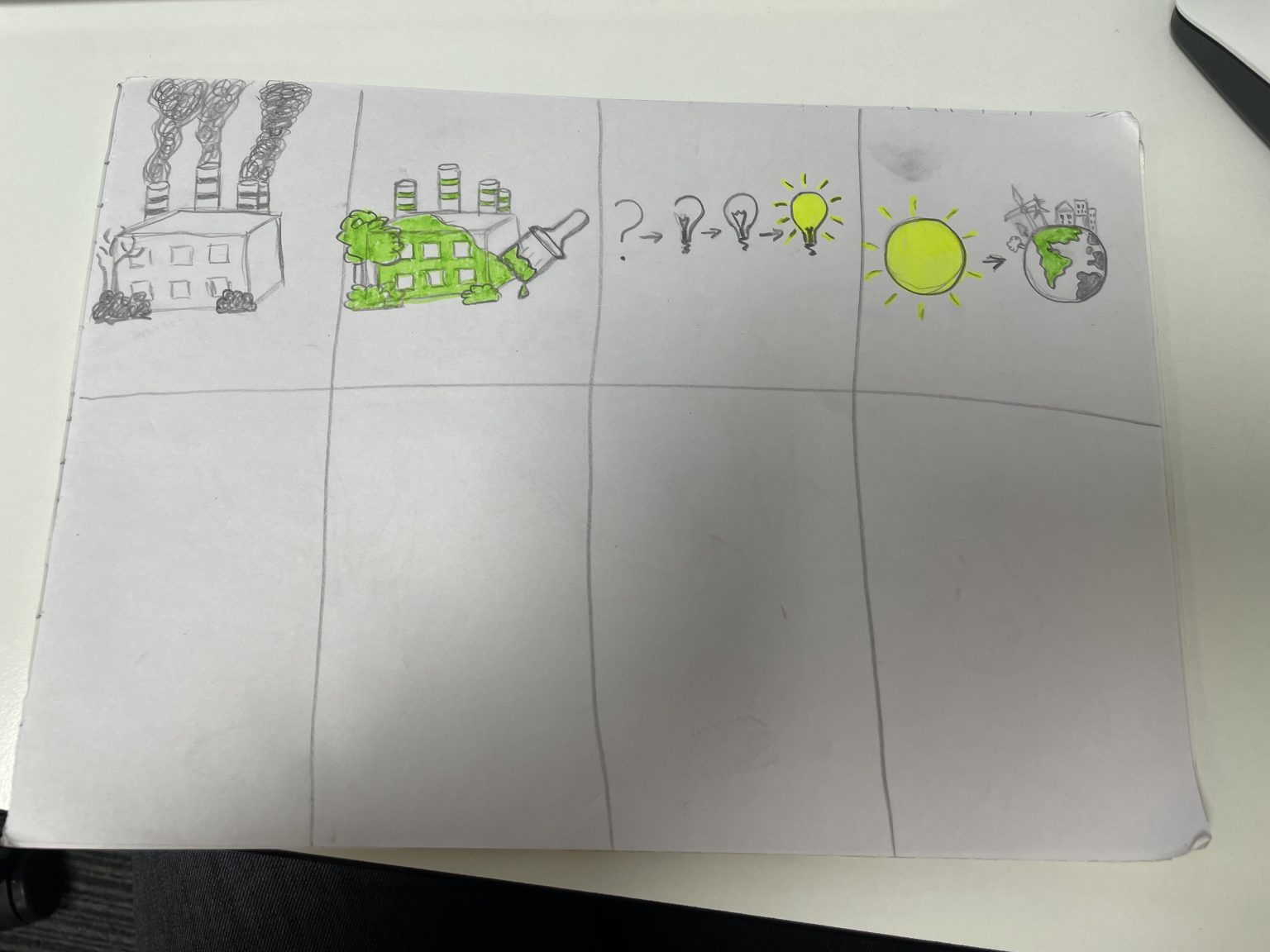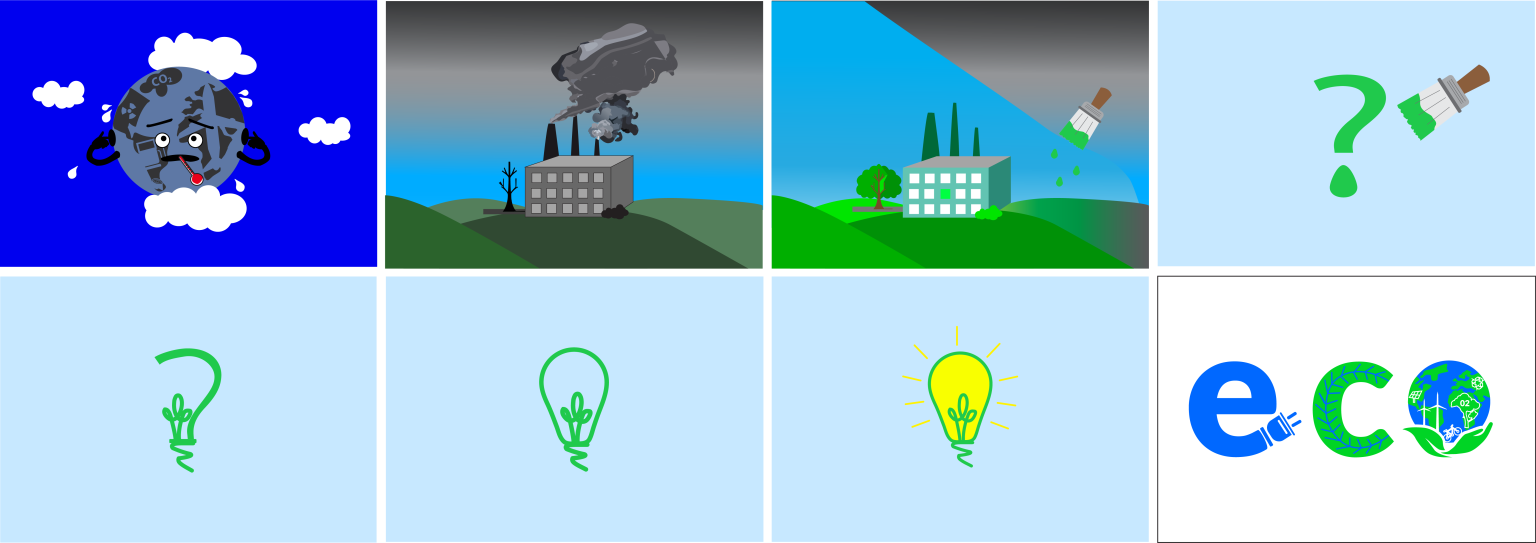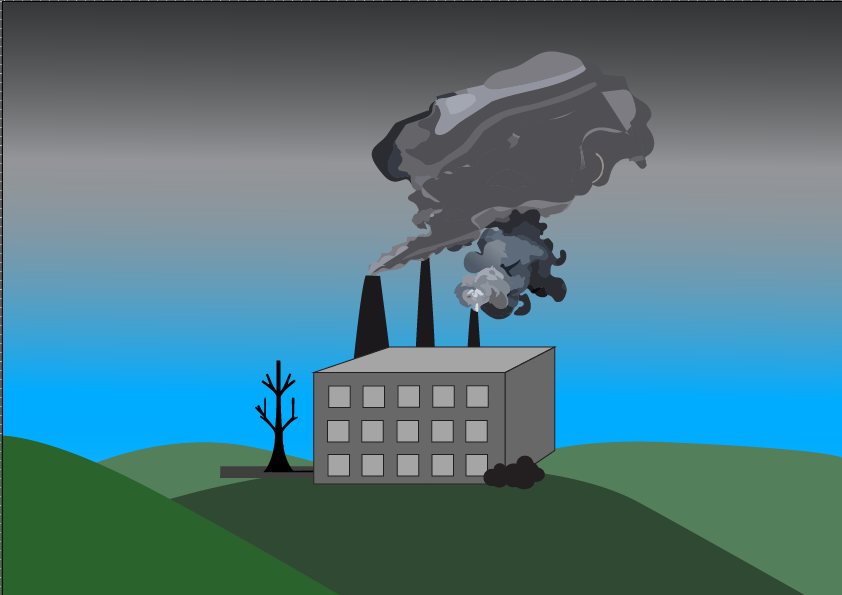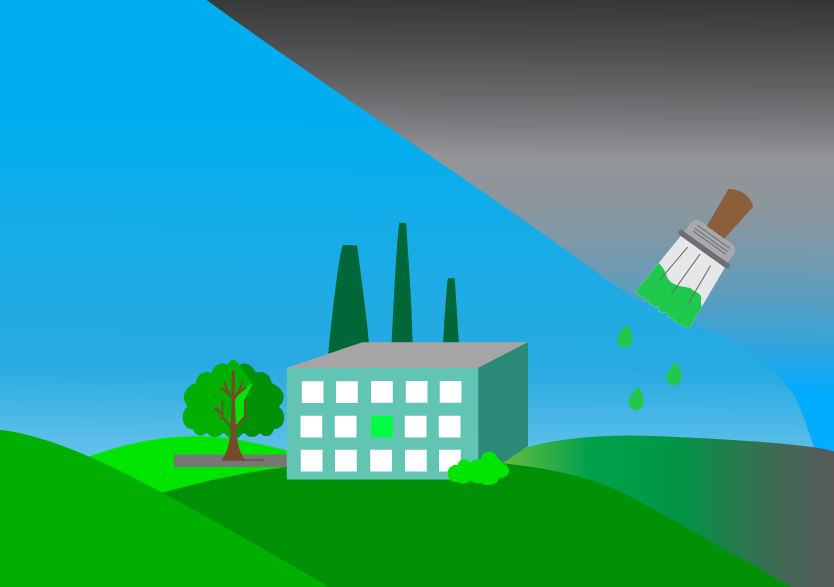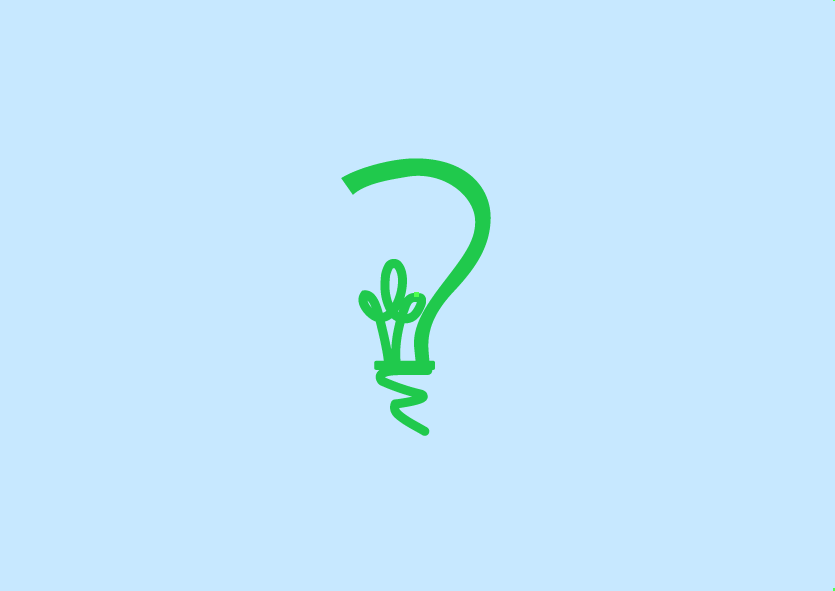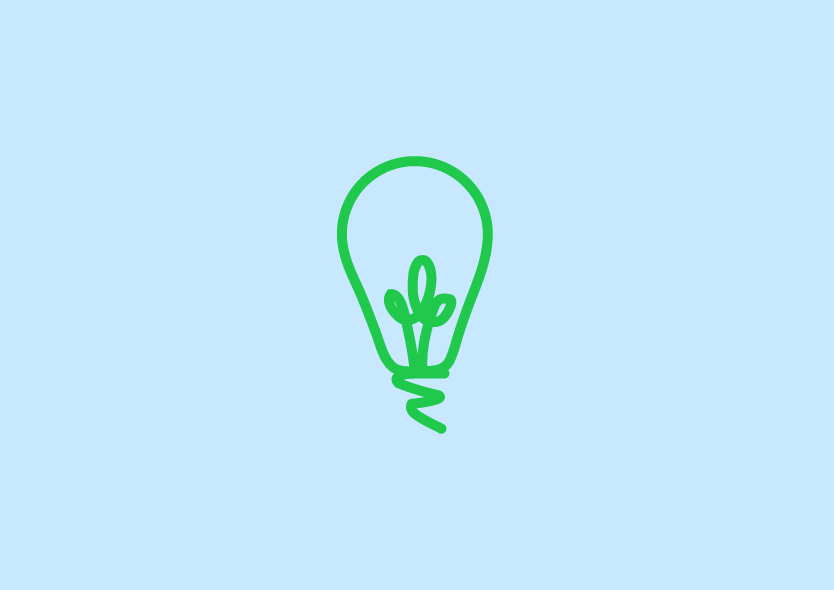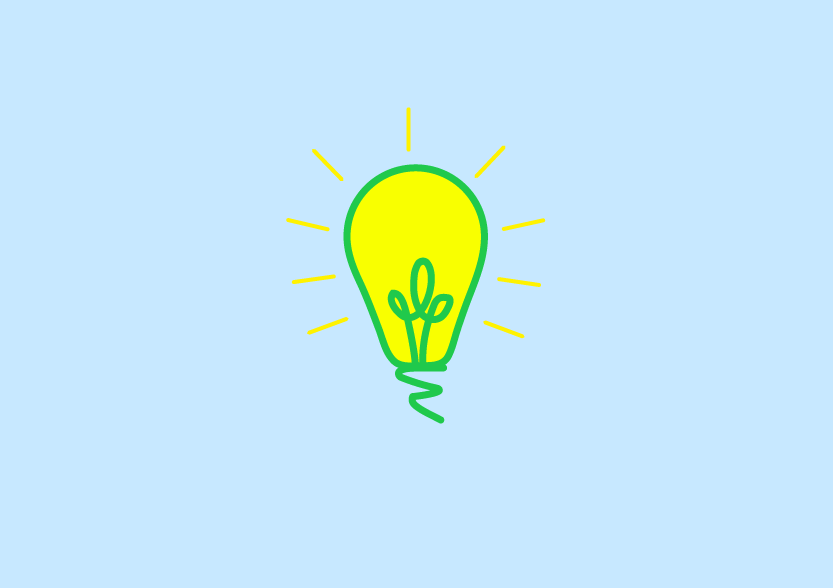Conceptual Design Transition Planning -Storyboard
Initially, I developed my storyboard using traditional pen and paper, as I find this method to be a quick and efficient way to brainstorm ideas. The storyboard originally began with a detailed close-up of factory pollution, symbolizing the beginning of the narrative. This scene then transitioned into a green transformation, visually represented by painting the picture green. Subsequently, the concept evolved to depict the shift from the question mark “How to get rid of the pollution?” to renewable energy sources, symbolized by a light bulb illuminating. The conclusion of the storyboard featured the earth emerging from the rotating sun, emphasizing sustainable practices for a greener future. I made adjustments to the beginning and end of the storyboard to enhance the overall coherence of the narrative, while preserving the original question mark to light bulb transition.
Climate change, pollution and global warming are significant environmental problems that are causing negative impacts on the Earth. These problems are real and have serious consequences for our planet. Through the first storyboard, I wanted to show the negative impact by depicting the Earth sad, exhausted, with a thermometer in her mouth sweating, looking like she can’t take the global warming anymore. I also made ears that she blocked due to too much noise pollution, the continents are made to look like some of the causes of pollution such as carbon pollution, disposal of toxic waste, fossil fuel pollution etc. To be more realistic I made the continents as some of the things responsible for polluting our planet: deforestation, hazardous chemicals and waste, fuel extraction, carbon dioxide from vehicles, planes, factories, etc.
Factories have a very big impact on the environment, the pollution from them is huge. With the second storyboard I show this up close, I designed the tree dying, the bush blackened, the surrounding meadows dark and poisoned. The smoke coming out of the chimneys can be seen forming a thick fog in the sky. No animals can be seen around the factory, not even birds fly over, which shows the negative impact on wildlife as well.
With the third storyboard of the design, I wanted to achieve the effect with the brush of splitting the landscape in two and colouring one part green, depicting the change I want to happen. Pollution to be gradually stopped by adopting sustainable practices and technologies to minimize business environmental footprint.
In the last story board, I introduced the word ECO, which represents the actions needed for a greener world. It is crucial for us to recognize the gravity of these issues and take steps to address them. The design aims to illustrate how we can combat climate change by reducing carbon emissions, implementing sustainable practices, and promoting renewable energy sources. Additionally, adopting eco-friendly habits like waste reduction, recycling, and water conservation can help combat pollution and preserve our natural resources. It is imperative that individuals, communities, and governments unite and prioritize environmental protection for the sake of our planet and future generations.
